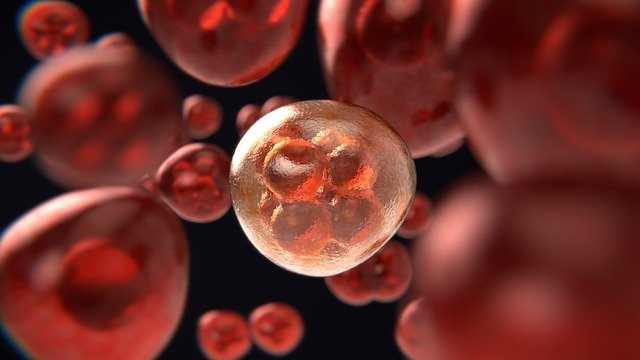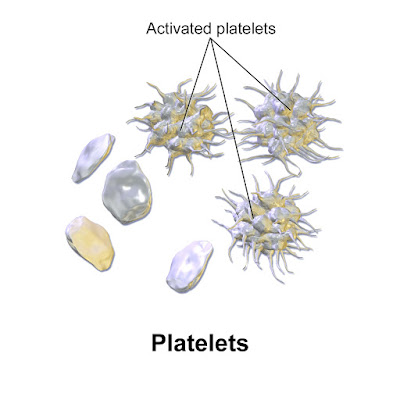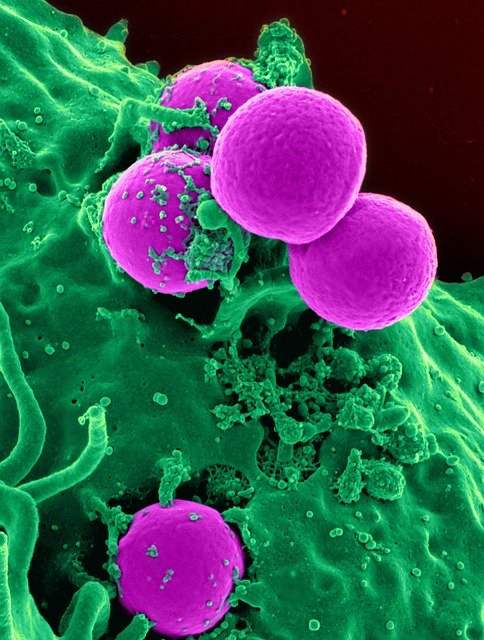Introduction: Hi guys, today's topic is leukemia. Few details on this topic here I have discussed here.
When most people think of blood, they think of a liquid, so that's what I am shading in, the liquid part of the blood. But blood has lots of cells in it too. So, for one, it has thesecells called red blood cells, and hopefully you can see that, which are really importantfor carrying oxygen and oxygen is required by all of the organs in our body, everything from your brain to your muscles requires oxygen. Then there are these cells that are called platelets,
which actually aren't cells at all. They are little chunksor fragments of cells that form blood clotsto help stop bleeding. Then you have these guys. There are several different types of white blood cells,
which is what our body usesto fight off infection.
So, these are the guys thatprotect us from bacteria and viruses and parasites. So, these cells are found in the blood. That's why they are called blood cells. But they are actuallynot made in the blood. They are made inside the bone. So, I'm going to draw a bone. If you were to look inside the bone, so if you were to take aslice of bone like this and you were to look at it, so this is your eye righthere looking inside the bone, you would see something like this. You would see that onthe outside of the bone is this hard part that we all know about, but you would see that bone isn't solid all throughout. There's actually this hollow cavity in the center of the bone, and that hollow cavity is filledwith his red, spongy tissue. That red, spongy tissueis called bone marrow, and bone marrow is where all of these different blood cells are made. So, I'm going to clear that out so that we can see what bone marrow looks like and what's going on inside bone marrow. If you looked inside, you'd see red blood cells being made, you'd see some cells making platelets, and you'd see white blood cells being made, right? And this is normal. This is all completely normal. But in leukemia, one of these cells, it could be a red blood cell, a platelet, or a white blood cell, starts multiplying really rapidly and out of control and it starts overtaking the bone marrow, kind of like this. And that's a problem for two reasons. Firstly, this cell that's dividing really rapidly, this leukemia cell, doesn't serve any function like a normal blood cell does. So, it doesn't carry oxygen. It doesn't fight off infectionor help make blood clots. It kind of does nothing. It's kind of a waste of space, and that's a problem because we don't want to use any of our body'senergy making cells that don't help the body, right? Secondly, it is a problem because if any one cell starts dividing really rapidly and taking up a lot of spaceinside the bone marrow, that leaves behind very little space and very little food forthe other cells to grow. So, because of this, the bone marrow isn't able to make as many of those other normal, healthy blood cells. And if it can't make them, then it can't supply them into the blood, and that's the problemyou see with leukemia, where you start seeing fewerred blood cells in the blood, that's those guys, and fewer platelets and fewer white blood cells in the blood. Then, eventually, when the leukemia cells run out of space to growinside the bone marrow, they leak into the blood. So, you start to seeleukemia cells in the blood, kind of like that, and actually this picture right here explains almost all of the symptoms that you see in leukemia. So, let's make some room to talk about the symptoms of leukemia. Okay, so firstly we said we see a decrease in the number of red blood cells, right, which I'm just going to abbreviate it as RBCs for red blood cells. Since red blood cells carry oxygen, this leads to symptomslike weakness and tiredness and fatigue, and the fatigue is from the brain not getting enough oxygen. And the body compensates for this by starting to breathe more quickly. So, the patient starts to experience some shortness of breath. And because red blood cellsgive the blood its red color, the patient starts looking paler when they have fewer red blood cells. We also said that we see a decrease in the number of platelets in leukemia. So, if the patient startsbleeding for whatever reason, they don't have enough platelets around to form that blood clotthat stops the bleeding. So, they experience prolonged bleeding and they also see easy bruising. Okay. And finally, we said that thereis fewer white blood cells, which I'm just going toabbreviate as WBCs, right. And since white blood cellshelp fight off infection, this leads to more frequent infections, an increased number of infections, or increased susceptibility to infections. These cells, these leukemia cells, that are really rapidly dividing, take up a lot of the body's energy. And because of that, you see symptoms such as weakness and symptoms suchas significant weight loss, which are things that yousee in lots of other cancers because you also have rapidlydividing cells in other cancers. And then, finally, the leukemia cells start to grow into the wall of the bone, and if you have ever had a bonefracture or bone infection, you know that the wall of the bone has lots of very sensitivesensory nerves in it, and because of that, thepatients with leukemia start experiencing bone pain, and that's not pain in just one bone, it's pain throughoutthe bones of the body. So, it's more generalized bone pain. So, if a patient starts showing signs and symptoms of leukemia, a doctor will often startoff by getting a blood test, and if they get a blood test, the first thing that you willsee is this picture over here. You'll see fewer of thehealhy, normal cells and you may even see the leukemiacells in the blood, right? So, that would lead to the suspicion that maybe the patient has leukemia, and that suspicion can be confirmed by actually lookinginside the bone marrow, and that's this. The cavity inside the bone and you can look inside the bone marrow by actually sticking along needle inside the bone and drawing out some fluid and then looking at the stuff under the microscope, and that's actually calle the bone marrow aspiration. So, in a nutshell, this is what leukemia is all about.
Conclusion: The word cancer, we think it's tumor, we also think of a group of cells that are dividing rapidly that eventually form a mass and that mass also visible. We can say, "problem starts here. "We need to get rid of it right away, "either with surgery or with medicine." I think what makes leukemia harder to understand and harder to visualize than other types of cancers is the fact that with leukemia you don't necessarily see a tumor, and that's because leukemia is a cancer of the blood.
That is all for today, keep following- What maybe you don't know about health and politics













0 Comments